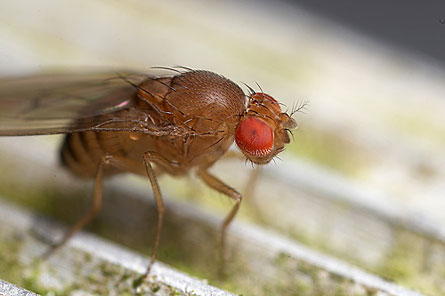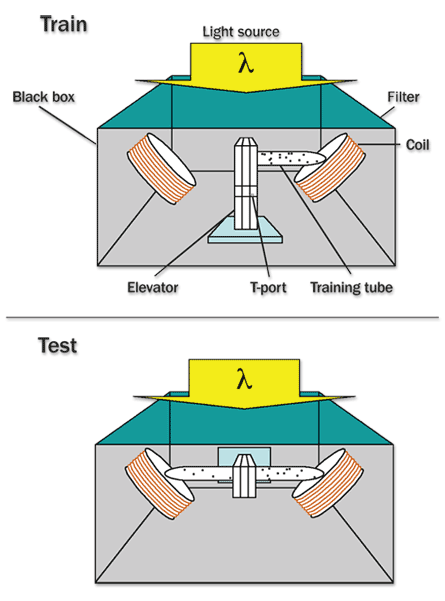- More than 2 years ago
Normal 0 false false false MicrosoftInternetExplorer4 Normal 0 false false false MicrosoftInternetExplorer4
Scientists have identified a molecule that fruit flies need to sense magnetic fields. It is the first time the specific molecule has been linked conclusively to magnetic sensitivity in any animal, the researchers report in a July 20 online Nature article.


The molecule, cryptochrome, acts as a light receptor and is sensitive to blue and ultraviolet light.
“This is a huge finding. It really says that cryptochrome, which is linked to animals’ circadian clock, is also involved in a living animal’s response to magnetic fields,” says study coauthor Steven M. Reppert, a neurobiologist at the University of Massachusetts Medical School in Worcester.
Understanding how animals sense magnetic fields is one of great remaining mysteries of sensory biology, notes Kenneth Lohmann, a neurobiologist at the University of North Carolina at Chapel Hill.
Lohmann, who was not involved with the new research, says that the study shows “quite convincingly that cryptochrome really is involved in animals’ detection of magnetic fields.”
But the study’s authors point out that it is difficult to relate the new findings directly to other animals’ use of geomagnetic fields, because the cryptochrome system is more complex in other insects and larger animals. The results may, however, help scientists begin to understand how animals such as migratory birds, which prominently rely on geomagnetic sensing for navigation and orientation, could use cryptochrome to know where they are going, Reppert says.
To test the molecule’s role in fruit flies’ orientation, Robert Gegear, a post-doctoral researcher in Reppert’s lab, built a T-shaped maze for the fruit flies to navigate. The fruit flies were placed at the base of the T and then lifted by elevator to the maze’s horizontal branches.
At the top of the T sat a light source, with coils that emit magnetic fields on either side. Both coils were turned on, but only one emitted the magnetic field. Some flies were then trained to associate the magnetic coil with a food reward. When exposed to visible and ultraviolet light and the magnetic field, the trained and non-trained flies tended to respond to the magnetized coil.
But when the researchers blocked the specific blue-light and ultraviolet wavelengths that activate the flies’ cryptochrome, none of the flies flew toward the magnetic field—not even the ones that linked food with that coil. Mutant flies with damaged or nonexistent cryptochrome light receptors did not respond to the magnetic field either.
“Cryptochrome is therefore necessary for magnetic sensitivity in fruit flies,” Reppert says. “Our study even suggests that the molecule is the actual receptor that detects the magnetism.”
That conclusion came after the researchers exposed the flies to light for a 24-hour period. The constant light exposure disrupted the flies’ circadian clocks so that they didn’t know whether it was day or night. When put to the T-maze test, the flies still moved toward the magnetic field. This suggests that cryptochrome works independently of the flies’ internal clocks to sense magnetic fields, Reppert says.






